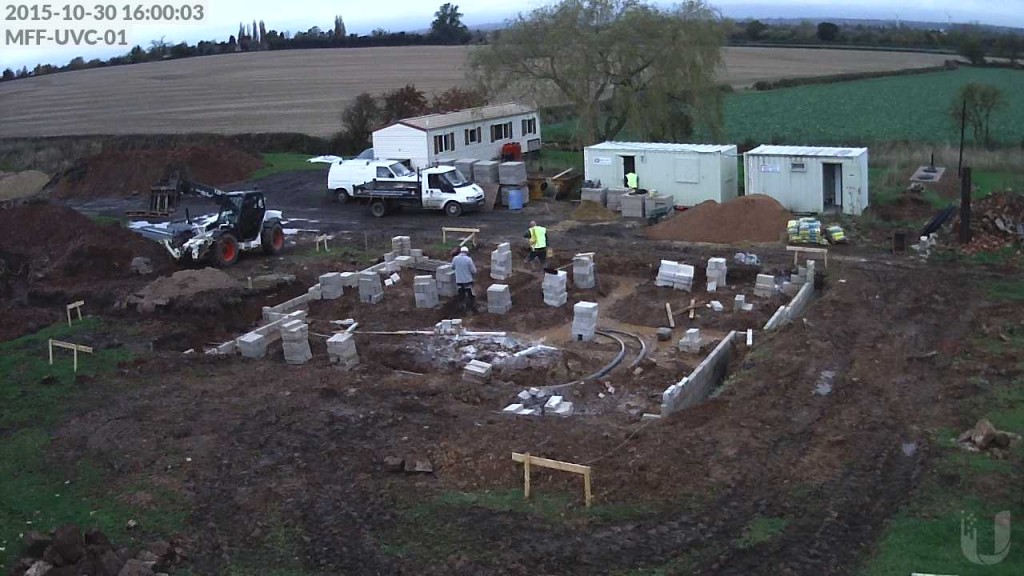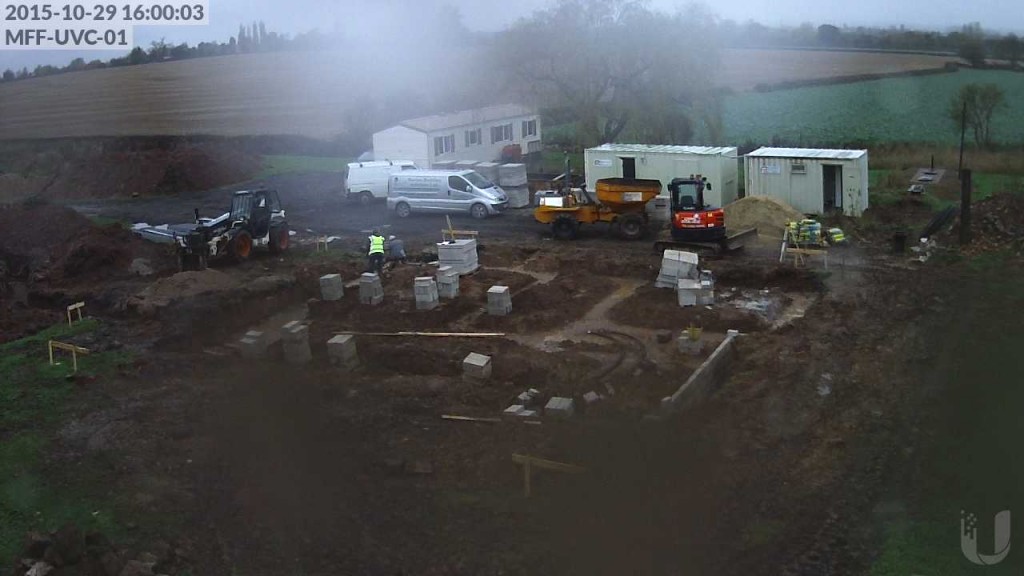Week 4, Day 5:
- More progress on the below-ground cavity walls.
- Initial preparation for attaching the steelwork to the foundations by drilling holes in the concrete.
- A site visit from Western Power Distribution (the electricity DNO for the area) to assess the condition of the overhead supply cables and poles and to fit a data logger to capture voltage and current snapshots during the coming week.
- The proposed make and model of Ground Source Heat Pump (a NIBE F1145) has a compressor start-up current of 32A which is just over the limit for some of the existing overhead cables. The data logger will highlight if there are any issues with the cables which mean they need maintenance work anyway; if they do that will (hopefully) reduce the contribution I need to make to having the cables upgraded.
- A new delivery of building sand for the block laying mortar since the previous supply was too coarse. The old sand will get used for filling in around the GSHP collector pipes.





